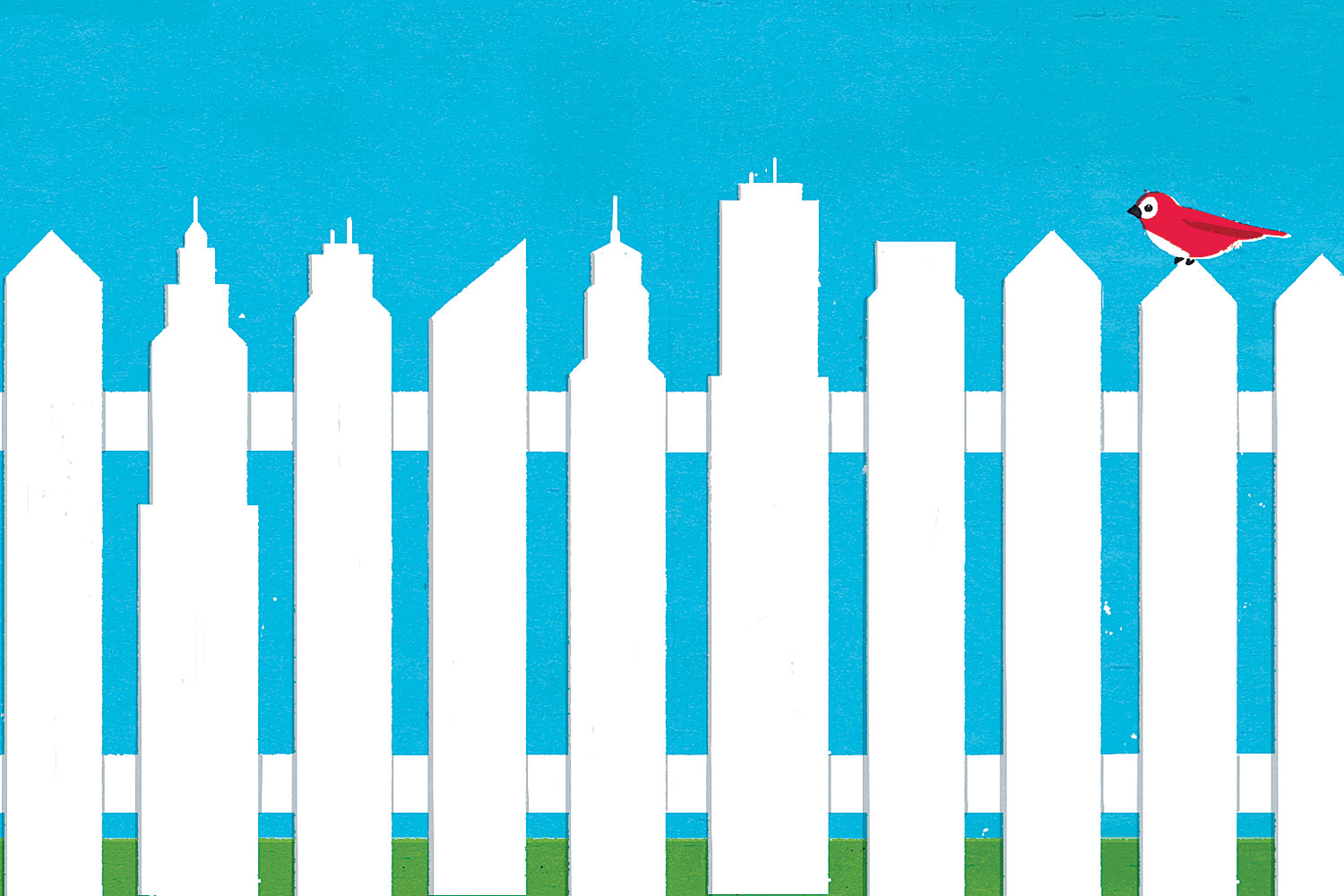In April, after six years in Lincoln Park, computer scientist Brad Blumenthal and his wife packed up for the burbs. But the couple, both in their mid-50s, didn’t want to leave city life behind entirely. So they bought a snug house in Skokie, part of a development on Floral Avenue within walking distance of shops, restaurants, and the Oakton el stop. Built on 28-foot-wide lots, half the typical size for the area, these houses run as small as 1,800 square feet. “We’re aware of the health and economic benefits of compact development,” Blumenthal says. “To me, this is old urbanism rediscovered.”
New urbanism—the movement toward small lots, walkable villages, and eclectic houses that mimic the organic mix of cities—has been around for decades. Just look at the list of “walkable urban places,” where residents can get to work and go shopping without cars, compiled by Locus, an advocacy group for sustainable development. Eleven Chicago suburbs make the cut: Arlington Heights, Aurora, Des Plaines, Evanston, Highland Park, Joliet, Lake Forest, Naperville, Oak Park, Skokie, and Wheaton.
But thanks to increased interest from buyers and less resistance from village governments, developers are constructing more new-urbanism-style homes in the burbs. “Millennials and boomers are demanding it,” explains Drew Williams-Clark, principal planner at the Chicago Metropolitan Agency for Planning.
For example, in Wilmette, a town that’s historically limited rentals, the village board preliminarily approved a plan in May to build a 75-unit luxury apartment building with ground-floor stores on Green Bay Road, across from the Metra station. Units will average about $2,250 a month for 1,000 square feet. The village courted the project in concert with its master plan, which in 2014 raised height limits downtown from three to five stories.
And in Northbrook, the under-construction Northshore 770 takes new urbanism a step further: It includes not just housing but also the semblance of a downtown. A Mariano’s grocery store and other shops will anchor 347 one- and two-bedroom luxury apartments when the development opens in December. The building, designed with empty nesters and young professionals in mind, is expected to be the largest rental development in the area.
True, the lack of space in such housing can be a drawback. But clever design can go a long way toward making a small footprint feel bigger. Consider the strategy of Jeremy and Vanessa Lin, who used to live in Niles with their three sons (a fourth is on the way). For the busy civil engineer and his consultant wife, a large house and yard would have been a maintenance nightmare. So they decided to buy a 3,300-square-foot house with a tiny yard—not far from the Blumenthals—and convinced the contractor to build a deck over the garage to increase outdoor space. “We’re going to use every inch of the house,” says Jeremy, who moves with his family in July. “It’s very flexible and efficient.”



